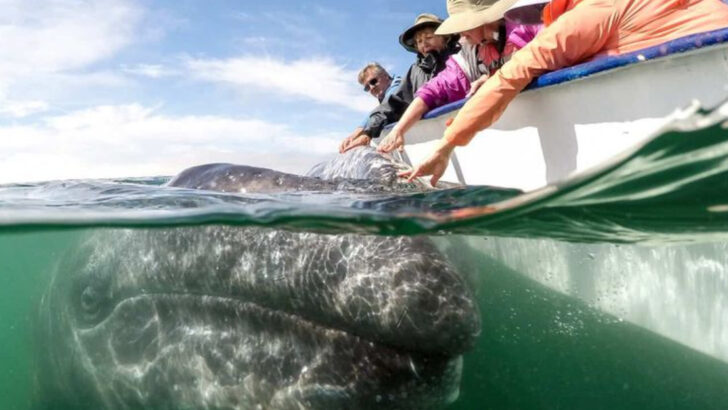Whale watching is an exhilarating experience, providing a unique opportunity to witness some of the most majestic creatures of the sea.
From the mighty humpback whale with its spectacular breaches to the playful antics of dolphins, each marine mammal offers its own charm and wonder.
This guide explores 13 incredible marine mammals you might encounter on a whale watching adventure, each one a testament to the rich biodiversity and beauty of our oceans.
Humpback Whale
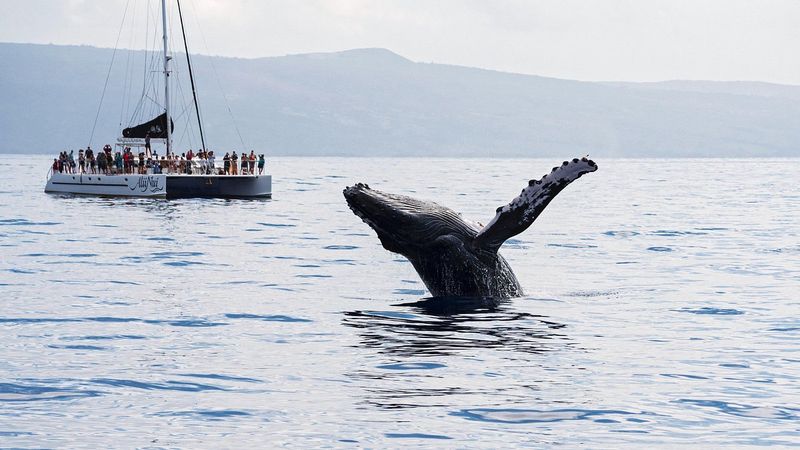
Known for their acrobatic breaches, humpback whales are a sight to behold. With their long pectoral fins and unique tail patterns, these whales have personalities as distinct as their appearances. Imagine witnessing a 40-ton creature launching itself into the air, a spectacle of both grace and power.
These social animals often travel in pods and communicate through complex songs. Each humpback pod has its own tune, a melodious pattern passed down through generations. Humpbacks are also well-known for their cooperative bubble-net feeding, a technique that showcases their intelligence and teamwork.
Blue Whale
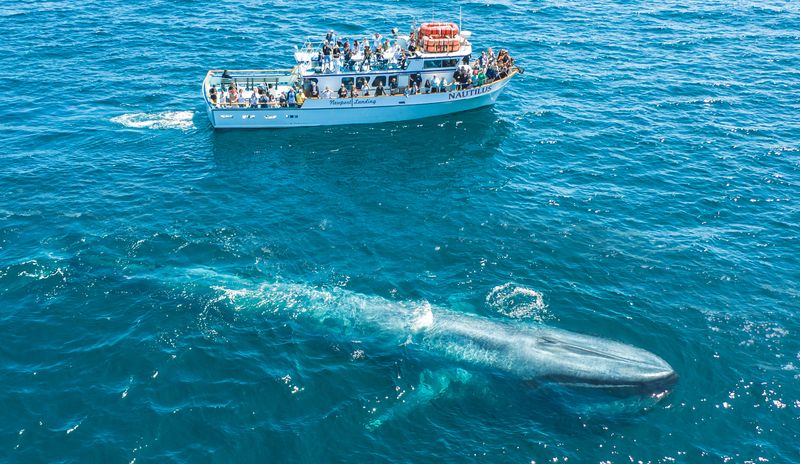
The blue whale, the largest animal to ever exist, is a majestic giant of the oceans. Despite their enormous size, they glide through the waters with a surprising elegance. Their heart alone can weigh as much as a car!
These gentle giants feed primarily on tiny krill, consuming up to 4 tons daily. During migration, blue whales travel over vast distances, a testament to their endurance. Observing a blue whale is witnessing a living piece of Earth’s history as these creatures have roamed the oceans for millions of years.
Orca
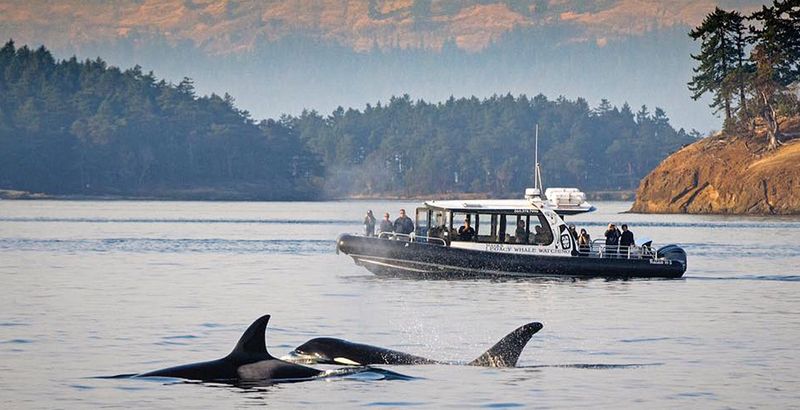
Orcas, or killer whales, are social creatures often seen in family groups known as pods. Their striking black and white coloration makes them easily recognizable.
With sophisticated hunting techniques, orcas are apex predators of the sea. They strategically hunt seals, fish, and even whales. Their intelligence and communication skills are remarkable, making them fascinating subjects of marine research. Despite their name, orcas show a playful side, often seen surfing waves and interacting with boats.
Dolphin
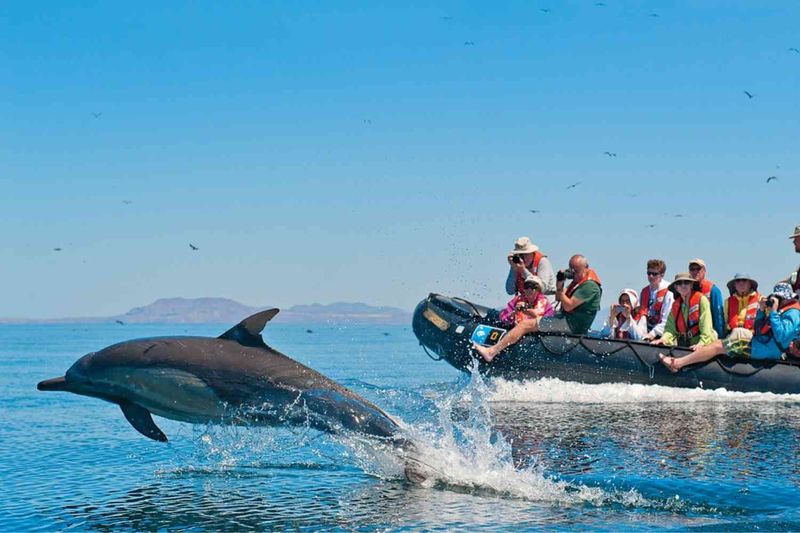
Dolphins are the ocean’s charmers, known for their playful nature and intelligence. Their social behavior is captivating, often seen riding waves and bow-riding alongside boats.
Dolphins communicate using a complex system of clicks and whistles, each sound carrying specific information. They are also one of the few species known to use tools, showcasing their cognitive abilities. Observing dolphins in their natural habitat is a delightful experience that often brings smiles to onlookers.
Sperm Whale
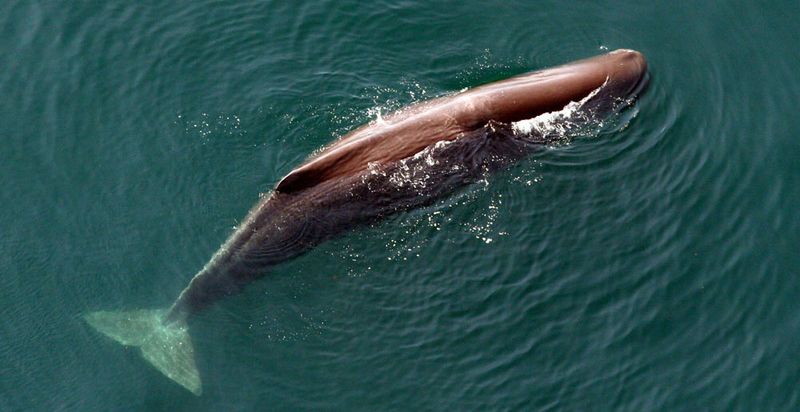
With the largest brain of any animal, sperm whales are intellectual giants of the sea. These creatures are known for their deep diving abilities, reaching depths of over 3,000 meters.
Sperm whales use echolocation to navigate and hunt in the pitch-black depths. Their diet mainly consists of squid, and they are often found near continental shelves where their prey is abundant. The clicking sounds they produce can be heard for miles, a testament to their powerful vocalizations.
Beluga Whale
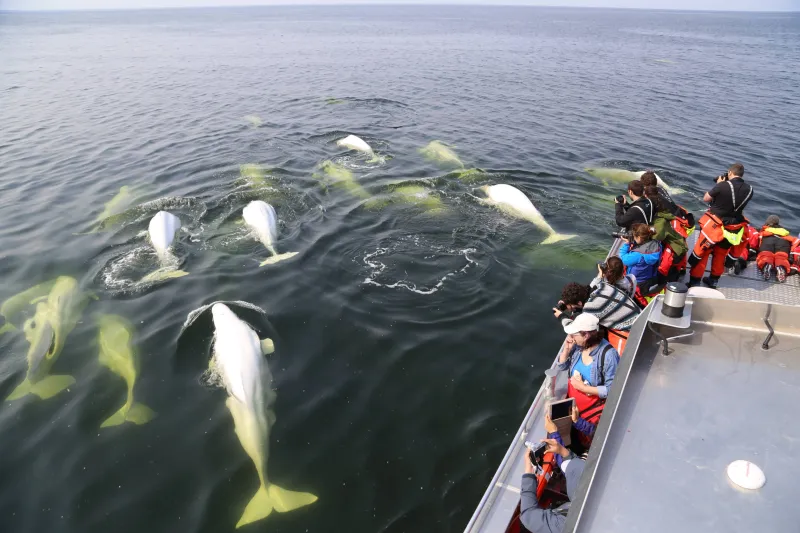
Beluga whales, often called “canaries of the sea,” are known for their vocal communication. These Arctic dwellers have a unique, bulbous forehead called a melon, which is used for echolocation.
Belugas are highly sociable and can form pods of up to 100 individuals. Their playful and curious nature makes them favorites among whale watchers. Their ability to mimic a wide range of sounds has made them subjects of extensive study regarding animal communication.
Gray Whale
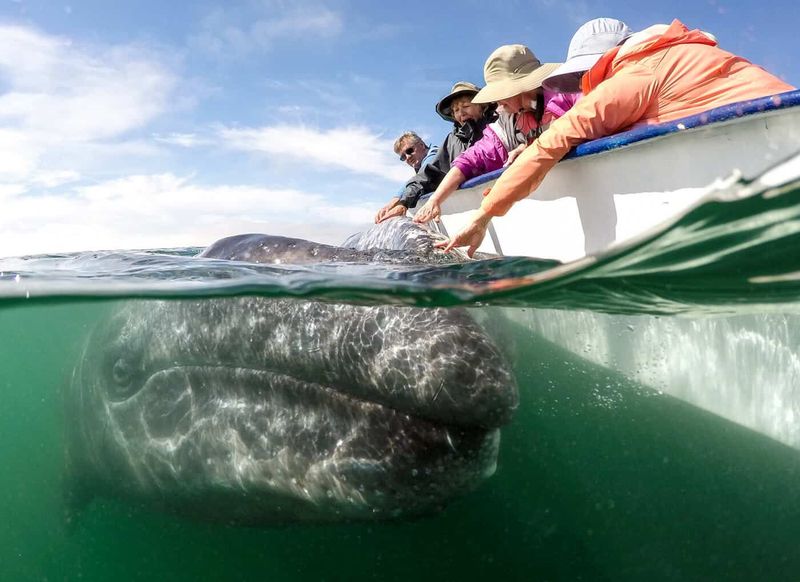
Gray whales are known for their long migrations, traveling up to 12,000 miles round-trip between feeding and breeding grounds. These journeys are among the longest of any mammal.
Their barnacle-covered bodies tell stories of their travels through the ocean. Often seen close to shore, gray whales are approachable, giving enthusiasts a fantastic opportunity to observe them up close. Their baleen plates allow them to filter-feed, primarily on amphipods found in the sediment of the ocean floor.
Minke Whale
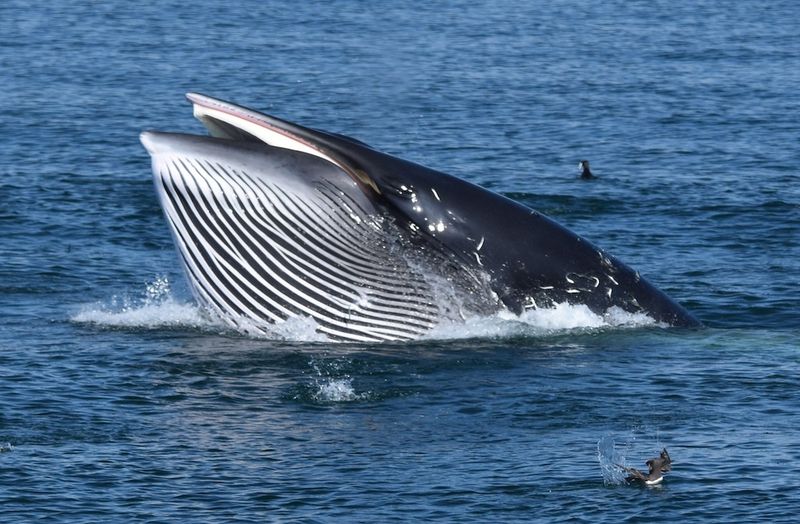
Minke whales are the smallest of the baleen whales, known for their curiosity around boats. These sleek animals can often be seen in the icy waters of Antarctica.
With their pointed snouts and streamlined bodies, minke whales are agile swimmers. They feed on a diet of krill and small fish, using their baleen plates to filter food from the water. Their inquisitive nature often leads them to approach vessels, providing whale watchers with close encounters.
Narwhal
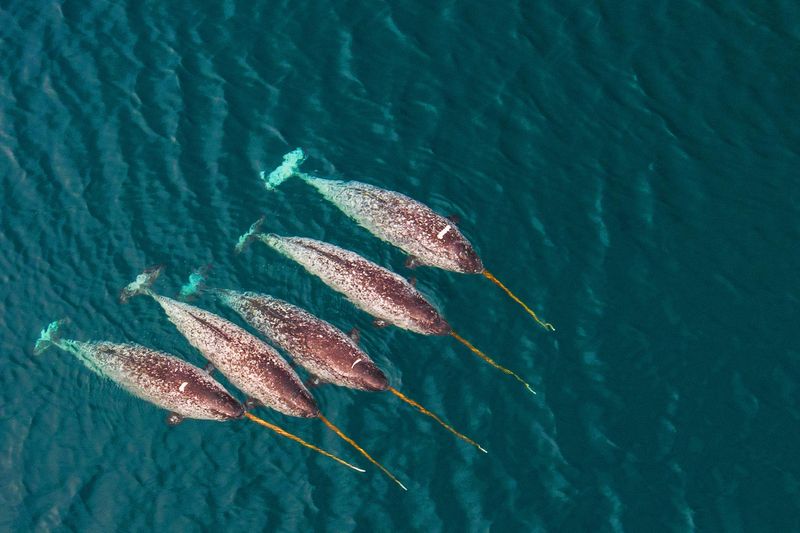
Dubbed the “unicorns of the sea,” narwhals are distinguished by their long, spiral tusk, which is actually an elongated tooth. These elusive creatures inhabit the icy waters of the Arctic.
Narwhals travel in pods and are known for their deep-diving capabilities. Their tusks are believed to have sensory functions, helping them detect changes in their environment. The mystery and majesty of narwhals continue to capture the imagination of both scientists and nature enthusiasts.
Fin Whale
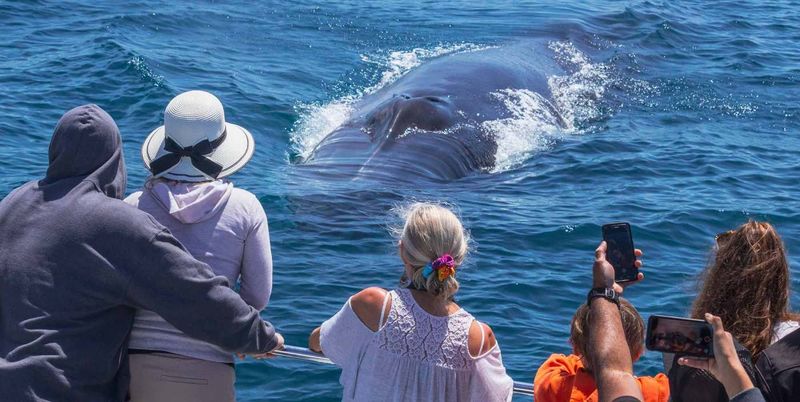
The fin whale, known as the “greyhound of the sea,” is the second-largest whale species. These swift swimmers are found in oceans worldwide and are known for their speed and agility.
With a distinctive ridge along their back behind the dorsal fin, fin whales are often seen feeding in the company of other marine animals. Their diet consists mainly of small fish, squid, and krill. Fin whales are capable of producing low-frequency sounds that can travel great distances underwater.
Sea Otter
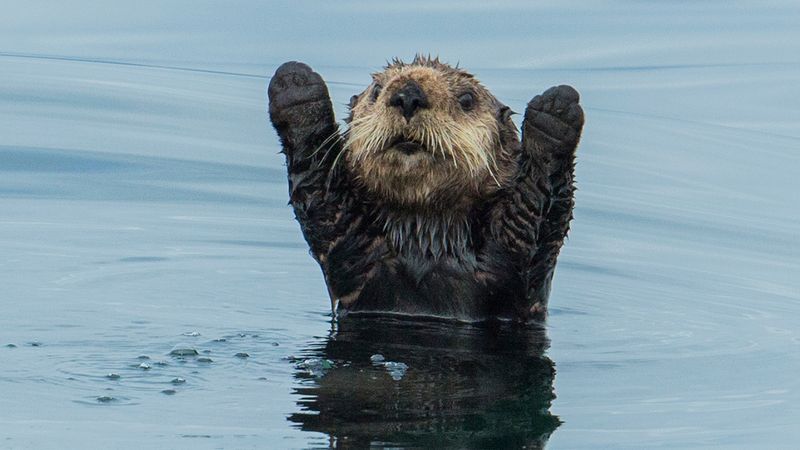
Sea otters, though not whales, are often spotted during whale watching tours, adding charm to the adventure. These endearing mammals are known for their playful behavior and tool use.
They have the densest fur in the animal kingdom, which helps keep them warm in cold waters. Sea otters use rocks to open shellfish, demonstrating their problem-solving skills. Their presence in the marine ecosystem is crucial, as they help maintain the balance of kelp forests.
Harbor Porpoise
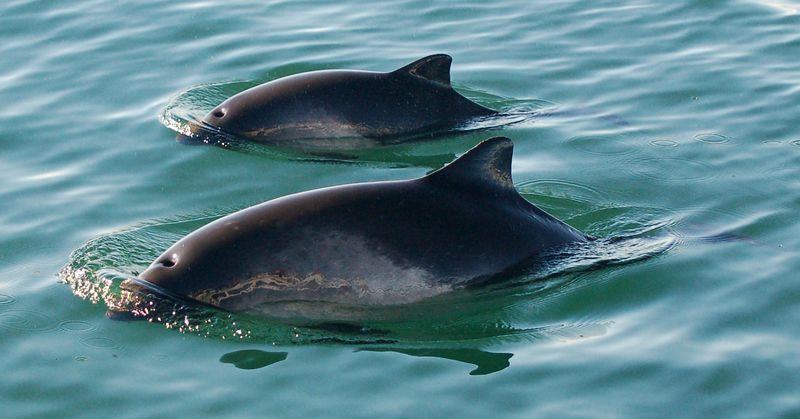
Harbor porpoises are shy and elusive, often seen alone or in small groups. They inhabit coastal waters and are known for their small, robust bodies.
Unlike dolphins, porpoises have a more reserved nature and are less likely to approach boats. Their diet includes a variety of fish and squid. Harbor porpoises are vital indicators of ocean health, as they are sensitive to changes in their environment.
Southern Right Whale
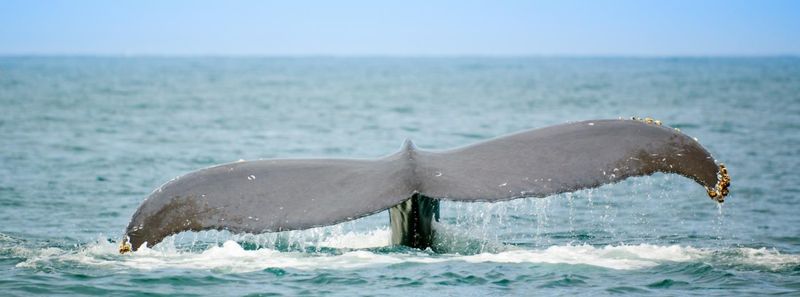
The Southern Right Whale is known for its callosities, rough patches of skin that are unique to each individual. These gentle giants are often seen close to shore, where they come to breed and give birth.
Southern Right Whales are baleen feeders, straining plankton and krill from the water. They are known for their curious nature, often approaching boats and engaging with whale watchers. Their acrobatic displays and strong migrations make them a highlight of any whale watching tour.

